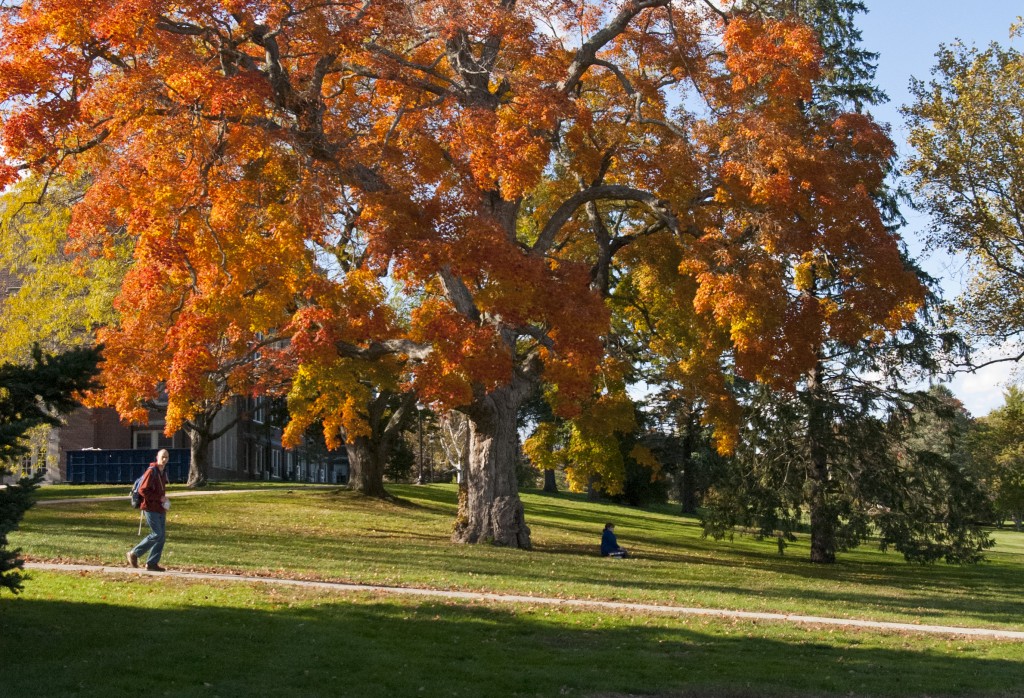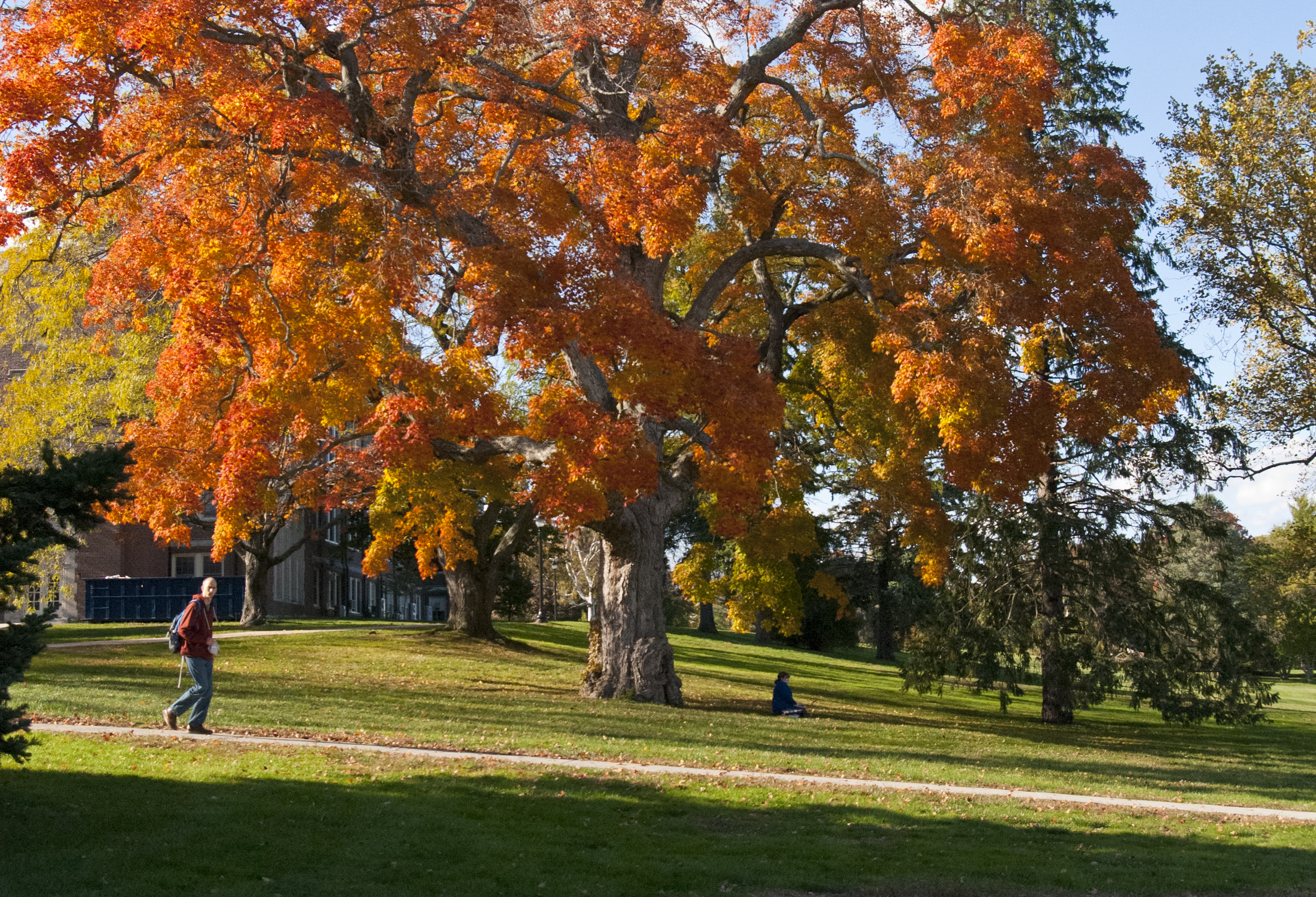Climate change could substantially alter the timing of the autumn season in New England over the next century, a new study finds – in ways that are not simply based on rising temperatures.

Researchers at the University of Connecticut have projected shifts in the yearly onset of autumn, taking into account not just changing temperatures but extreme factors such as drought, frost, and other stresses. They show that while northern New England could experience later leaf changes, coastal southern New England could see a shift toward an earlier autumn season.
These findings are important not just for scientists, but also for the multi-billion-dollar autumn foliage tourism industry.
“Many other studies have shown that autumn could come later each year based on rising temperatures,” says lead author Yingying Xie, a Ph.D. student in the Department of Ecology and Evolutionary Biology. “But this is the first study to show the interactions of a range of different climate variables on regional ecosystems.”
Xie’s work with coauthors John Silander, professor of ecology and evolutionary biology, and Xiaojing Wang, assistant professor of statistics, is published this week in the Proceedings of the National Academy of Sciences.

Phenology, or the seasonal timing of life events in plants and animals, has been studied extensively in the spring season, says Xie, because the emergence of leaves and flower buds is easy to measure and analyze. The autumn season, however, is much more fluid: scientists don’t have a consistent protocol for measuring leaf color change, and the changes happen more slowly.
Most phenology studies have looked only at temperature and day length to understand the changing seasonality; yet extreme weather events are known to be a hallmark of future climate change on a global scale.
Xie and her colleagues used remotely-sensed satellite data from New England forests in the years 2001 to 2012. They analyzed a region extending from northeastern Vermont and northwestern New Hampshire, to central Massachusetts and eastern Connecticut, and looked at the timing of leaf color change and drop, which signal the onset of plant dormancy.
If more carbon dioxide remains in the atmosphere, it could create a negative feedback loop that accelerates climate change. — Yingying Xie
The observed data showed that although moderate heat and drought conditions could lead to later dormancy, cold, frost, extreme wet conditions, and high heat stress could lead to earlier dormancy.
Using a mathematical model, the authors then made predictions for the years 2041 to 2050 and 2090 to 2099, based on climate change projections. The model suggested that future years could see later dormancy in northern New England and earlier dormancy in coastal and southern New England.
These geographic differences have to do with both the climate and the ecology of those areas, says Silander. The northern areas of Vermont and New Hampshire are mostly maples and birches, while there are more oaks in the south, in Massachusetts and Connecticut.
“Oaks are more drought-tolerant, which may explain why southern New England shows less phenological sensitivity to drought variation than, say, regions dominated by maples or birches,” he says. “Species composition makes a difference.”

Xie says that the results could have an impact on the global carbon cycle, which is intricately connected to climate change. Forests are a great source of carbon sequestration: they sponge up carbon dioxide out of the atmosphere, reducing the greenhouse effect. But if autumn starts coming earlier in some places, the growing season will be shortened, which would give forests less time each year to suck up carbon.
“If more carbon dioxide remains in the atmosphere, it could create a negative feedback loop that accelerates climate change,” says Xie.
The researchers hope their results encourage scientists to take more variables into account when examining autumn phenology. The group is developing a project that will begin measuring leaf color variation, an obvious and key factor in measuring autumn dormancy, they say.
Xie hopes the work will also help to create more specialized predictions of autumn phenology at a smaller scale. This year, for example, in Storrs, she has noticed delays in leaf color timing for some species, and advances in others.
“White ashes always have early coloration and leaf drop, but this year they were still green in early October,” Xie says. “It shows that there’s always heterogeneity due to environmental variation across patches of forest.”



